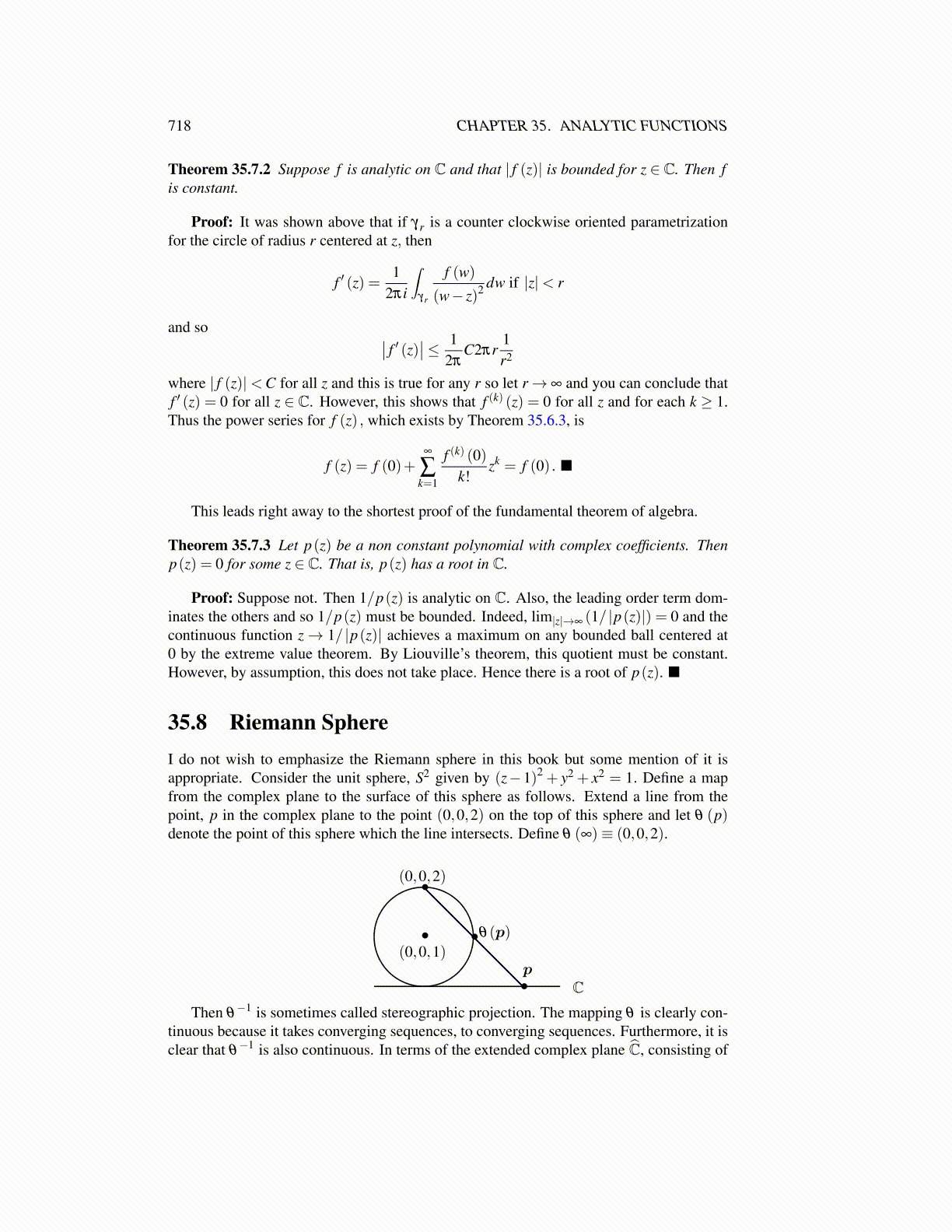
718 CHAPTER 35. ANALYTIC FUNCTIONS
Theorem 35.7.2 Suppose f is analytic on C and that | f (z)| is bounded for z ∈ C. Then fis constant.
Proof: It was shown above that if γr is a counter clockwise oriented parametrizationfor the circle of radius r centered at z, then
f ′ (z) =1
2πi
∫γr
f (w)
(w− z)2 dw if |z|< r
and so ∣∣ f ′ (z)∣∣≤ 12π
C2πr1r2
where | f (z)|<C for all z and this is true for any r so let r→ ∞ and you can conclude thatf ′ (z) = 0 for all z ∈ C. However, this shows that f (k) (z) = 0 for all z and for each k ≥ 1.Thus the power series for f (z) , which exists by Theorem 35.6.3, is
f (z) = f (0)+∞
∑k=1
f (k) (0)k!
zk = f (0) . ■
This leads right away to the shortest proof of the fundamental theorem of algebra.
Theorem 35.7.3 Let p(z) be a non constant polynomial with complex coefficients. Thenp(z) = 0 for some z ∈ C. That is, p(z) has a root in C.
Proof: Suppose not. Then 1/p(z) is analytic on C. Also, the leading order term dom-inates the others and so 1/p(z) must be bounded. Indeed, lim|z|→∞ (1/ |p(z)|) = 0 and thecontinuous function z→ 1/ |p(z)| achieves a maximum on any bounded ball centered at0 by the extreme value theorem. By Liouville’s theorem, this quotient must be constant.However, by assumption, this does not take place. Hence there is a root of p(z). ■
35.8 Riemann SphereI do not wish to emphasize the Riemann sphere in this book but some mention of it isappropriate. Consider the unit sphere, S2 given by (z−1)2 + y2 + x2 = 1. Define a mapfrom the complex plane to the surface of this sphere as follows. Extend a line from thepoint, p in the complex plane to the point (0,0,2) on the top of this sphere and let θ (p)denote the point of this sphere which the line intersects. Define θ (∞)≡ (0,0,2).
•
•
•(0,0,2)
(0,0,1)•
p
θ(p)
CThen θ
−1 is sometimes called stereographic projection. The mapping θ is clearly con-tinuous because it takes converging sequences, to converging sequences. Furthermore, it isclear that θ
−1 is also continuous. In terms of the extended complex plane Ĉ, consisting of